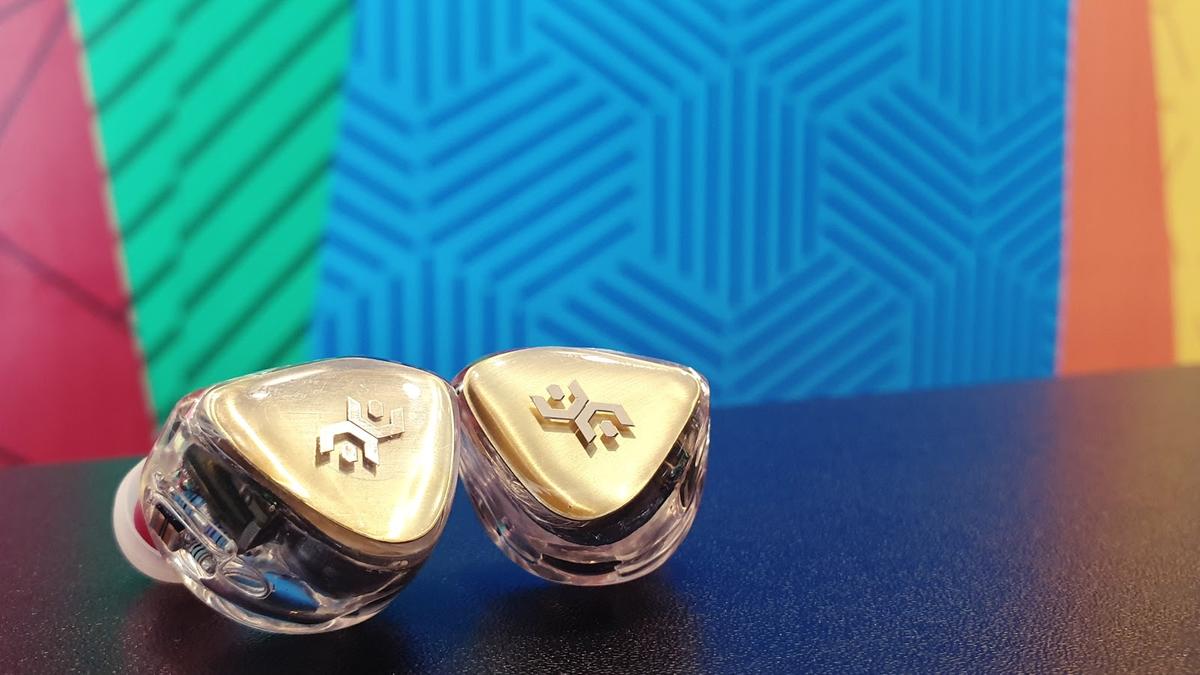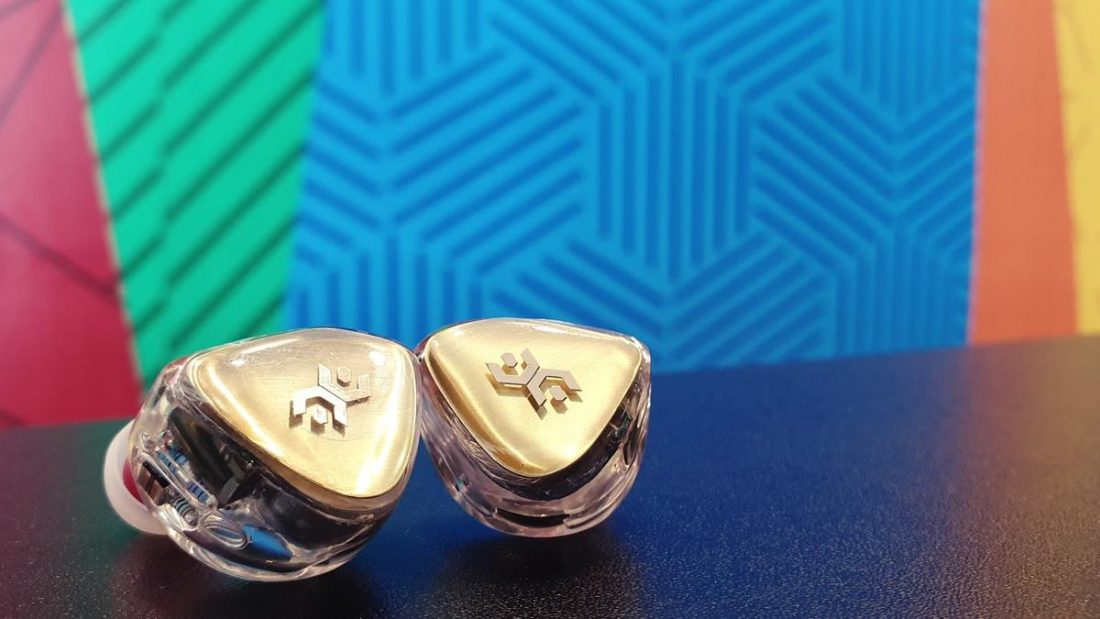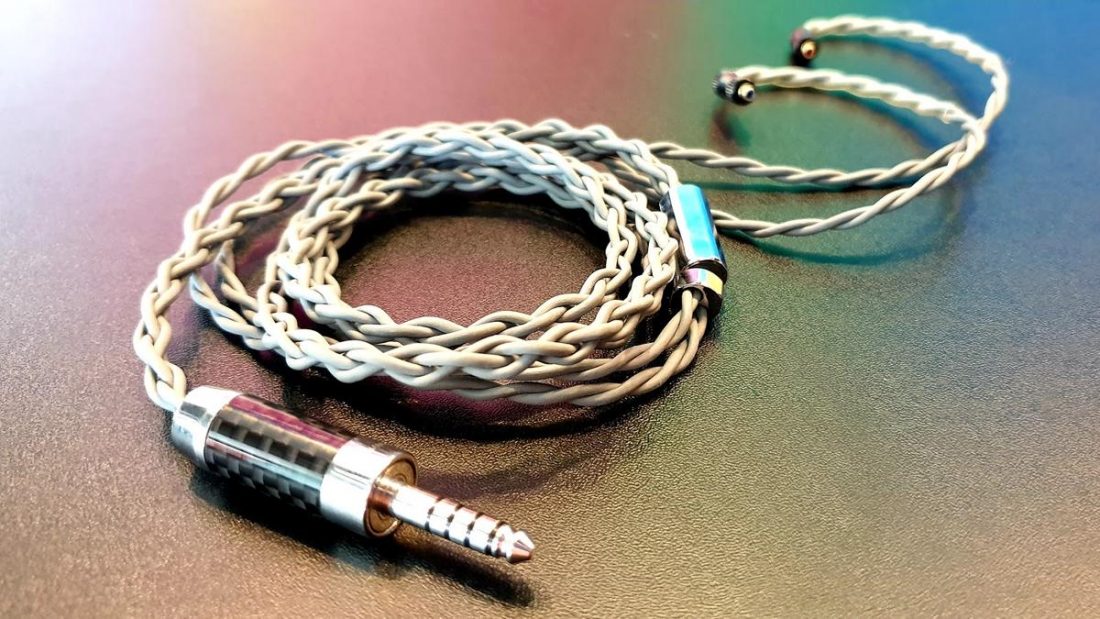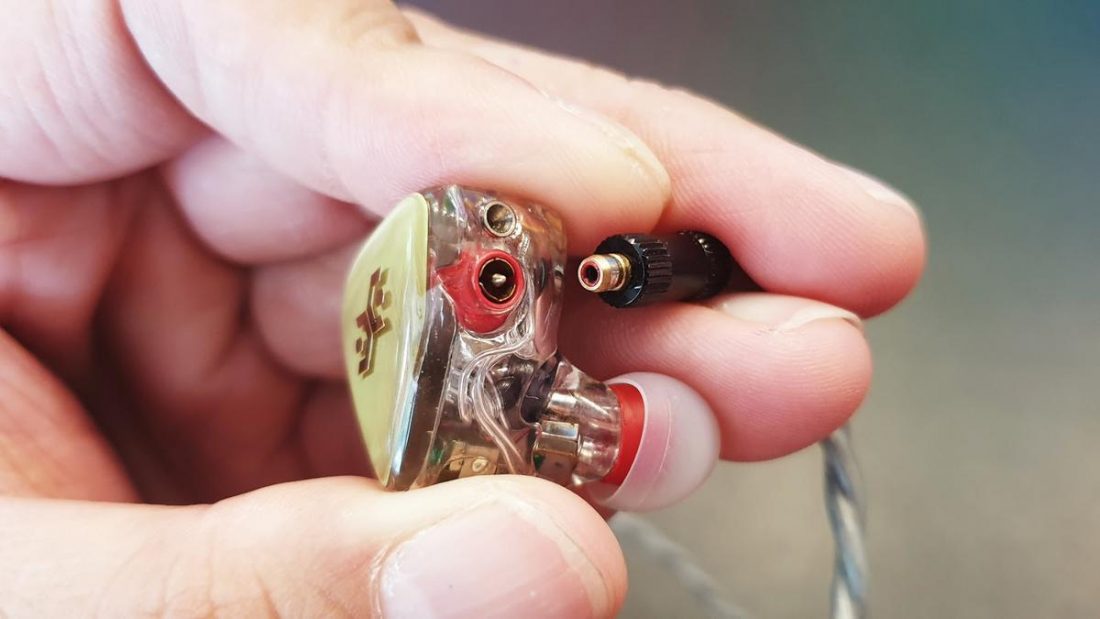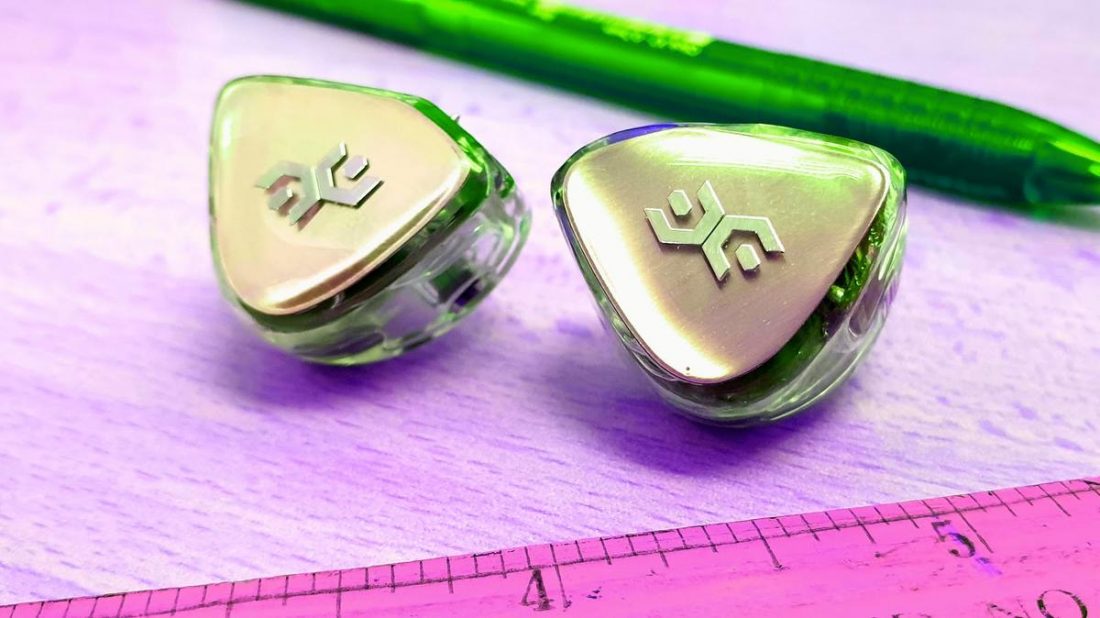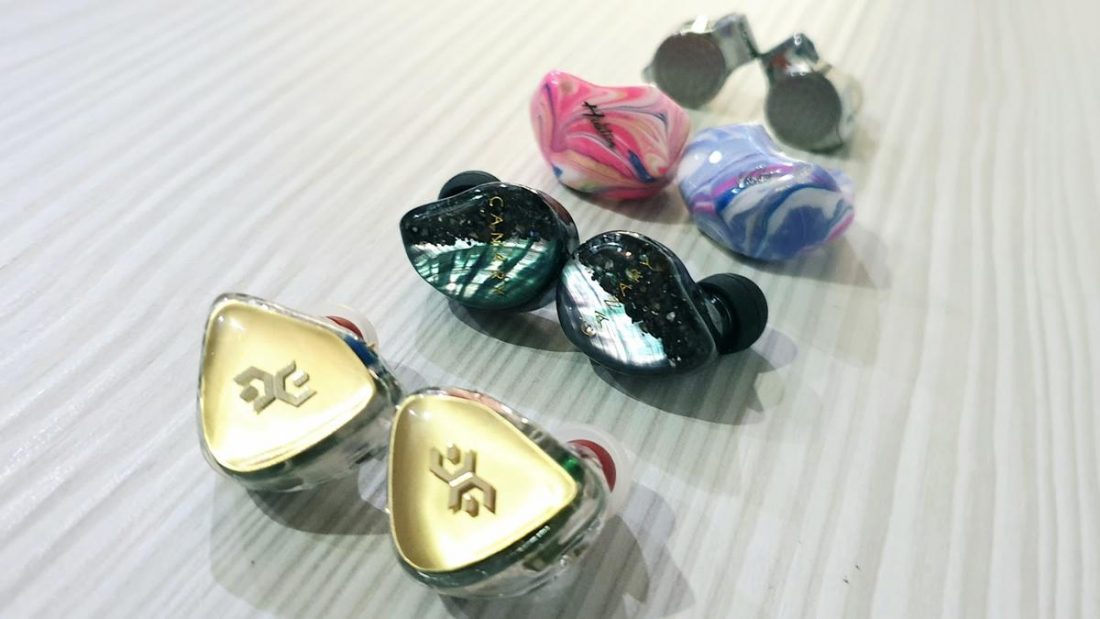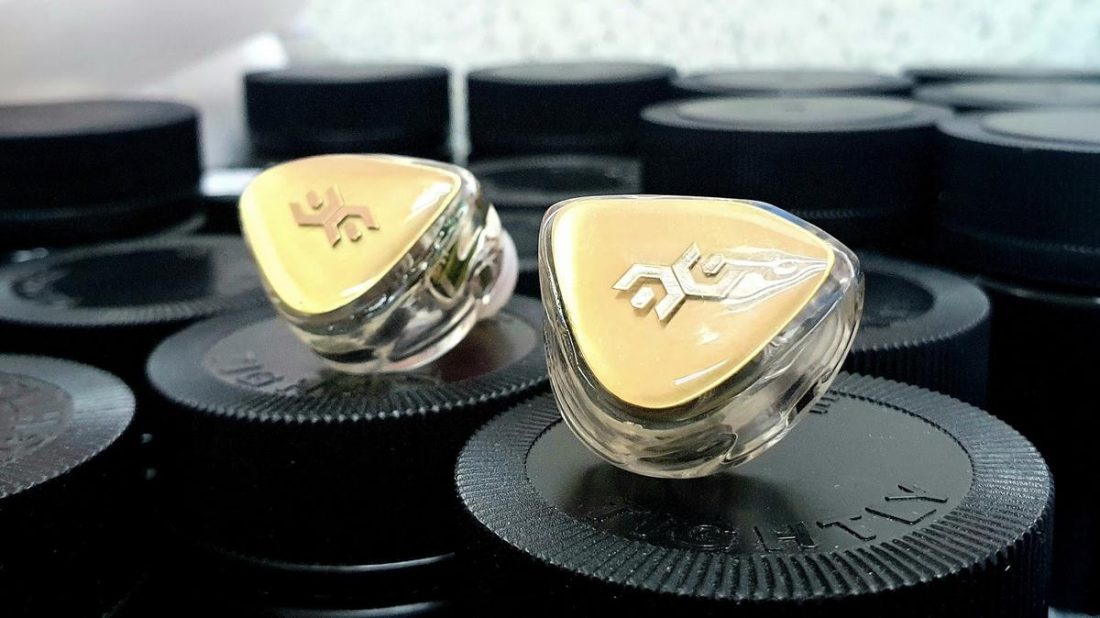My home country Malaysia is known for many things. The twin towers, pristine beaches, wondrous food, and unabated political turmoil. Beneath the bubbly surface, a few local die-hards carve a niche for themselves in portable audio. There’s Unknown Custom tending to the budget crowd, and Sound Linear tinkering with all sorts of funky hybrids. And then there’s Elysian Acoustic Labs. Positioning himself as the Jimmy Choo of the audio world, founder Lee Quan Min is relatively unknown in Malaysia, but enjoys a healthy following in Japan where he plies his trade. I’ve met Lee a few times in audio shows, and his passion and personality shines through every time: he’s affable, assertive, and supremely confident.
Higher than High
That confidence carries over to Elysian’s price tags, which are high end, on par with flagship offerings from, say, Empire Ears and 64 Audio. And like Jimmy Choos, the price barrier is the main reason why Lee doesn’t have a rabid following back home. It didn’t help that, listening to his earlier lineups from 2018 and before, his in-ear monitors (IEMs) showed promise but had much to improve on.
Flyer than Fly
The win generated much excitement locally, and Lee took his beloved creations nationwide so we could listen for ourselves. In my hands is the flagship Annihilator, which shares the same tuning and driver configuration as the DIO. How are they different? The DIO comes with a special cable called “The World”. My anime days are long gone but this dude is the inspiration for the nomenclature. The Annihilator is a triple hybrid, consisting of a Foster DD for bass, four balanced armatures (BAs) for mids, and two electrostatic (EST) drivers for the treble. It retails for a wallet-shattering $3680 or MYR14999, and is available through Stars Picker in both custom and universal versions. I would like to thank Mr. Lee of Elysian Acoustic Labs for the loaner.
Equipment Used:
DAP IEMs Albums
Technical Specifications
Drivers: 1 Dynamic, 4 Balanced Armature, 2 Electrostatic Crossover: 4-Way Frequency Response: 10Hz – 40kHz Sensitivity: 110dB SPL @ 1mW Impedance: 40Ω @ 1kHz
Disclaimer
The loaner package has the Annihilator and a PW Audio 1950s cable packed in a Van Nuys case. “The World” is not included. The retail package differs greatly, so I am not in a position to discuss the packaging and accessories. And being a demo unit, I’m not at liberty to comment about the build quality and fit (although I have no complaints about this one), so this review will focus on sound.
About Cables
My sound impressions are based on the Annihilator > 1950s chain. You might get a different listening experience since Annihilator and DIO will come with Elysian’s own cables. Annihilator comes with a gold/silver alloy and pure silver hybrid cable, while DIO’s “The World” is a 4-wire, internally shielded, 2-layered copper cable, yours for an extra $2380 or MYR10000. Yikes. Cable believers, you do the math.
Pentaconn Ear Plug
From my experience, the fit is easier and more compliant than MMCX, and the build is more robust than 2-pin. A small click connects the cable, and removal needs just a short tug, alleviating the ill-fitting nightmares MMCX might bring. The Pentaconn Ear Plug is well-made but we’ll have to wait longer for other companies to adopt it. To my knowledge, only Annihilator/DIO and Acoustune’s HS1695Ti use them.
Sound Quality
WIth a name that can only be associated with warships and wrestlers, you can bet the Annihilator harbors aggression and demands attention. But does it sound any good?
Overall Sound Signature
In a word, yes. Resoundingly so. The Annihilator is a U-shaped IEM in its purest form, with elevated and authoritative bass, hyper-detailed and bright treble, and a mids section that takes a step back but binds the volatile signature together. Notes are fast and furious, while the presentation is aggressive yet airy. It’s a sonic explosion waiting to happen. This is an IEM that carries out a protracted character study on the Sonion EST drivers, a meditation on the attributes of full electrostatic setups: astounding detail, pristine transparency, relentless transient speed and air, ungodly air.
Listening Conditions
Being a well-worn, oft-auditioned demo unit, burn-in was not carried out. It’s well-done so to speak. The main review rig is Sony’s NW-WM1A Walkman modded by Project K, using the PW 1950s cable, and SpinFit CP100 ear tips.
Bass
Once upon a time, my virgin ears were exposed to the almighty bass of the Legend X, and it became my benchmark for jaw-dropping, earth-shattering bass… until now. Annihilator takes the fight directly to Empire Ears’ offices in Georgia, USA with a mind-blowing, soul-crushing bass of its own. Let’s discuss the sound before I run out of superlatives. Annihilator has an ominous sub-bass that is more heard than felt, with a rumble that just tickles the throat. Extension below is superb, but there are other sub-basses with more gruff and thump. The meat is in the midbass, which conveys authority and power via hard, solid punches. Any song I played, be it Hotel California, Get Lucky or 24K Magic, when the bass drops, maximum enjoyment ensues.
The Mass Effect
But it’s not just brute force. The midbass energy is counterbalanced by a balletic, swift decay that wipes the stage clean. So despite the heavy-handed bass punch, positioning, layering and texture are rendered wonderfully thanks to the note swiftness and abundant black space. The bass is further enhanced by a natural roundness and timbre, lending an organic, speaker-like quality.
Mids
First off, these are not mids to soothe the heart nor calm the nerves. You will find no reprieve if you seek seductive vocals, or a shoulder to cry on. Emotion is a currency and the Annihilator is stingy. That being said, the mids’ aim here is to unite the signature in the most coherent manner possible, bridging the warm, full bass and the bright, knife-edged treble. It’s a thankless job but someone has to do it. Transition from the full, padded bass notes to the thinner, sharper mids is noticeable. The mids are called to action with crystal-clear definition and a relentless pace, but note richness and timbre fall by the wayside. Timbre is unmistakably skewed bright, and the note texture is a bit edgy. Lower mids also take a dip, leading to throaty male vocals.
Shine Like a Diamond
But once you accept the mids for what they are, you begin to enjoy them. They provide a clear, transparent window to the music, an honest and unfiltered representation of the recording without tint nor coloration. They pave the way in detail levels, speed, air and dynamics, uncovering nuances and micro-details even my seasoned ears could not hitherto perceive in familiar songs. For sticklers of detail, the Annihilator is easy to recommend. The sheer transparency will leave you thinking just how much you’ve been missing out on.
Treble
If the devil is in the details, there’s got to be about 4 or 5 devils at work here. The highlight of the Annihilator, the Sonion EST drivers are pushed to the last drop of sweat, retrieving layers upon layers of information found in every pore and crevice of the track. You will hear music in all its glory, for better or worse. The resolution is nigh insurmountable. The treble is thin and crispy with a bright tinge, while note size is reduced further from the mids, rendered more agile and pinpoint. It’s like sand flowing down an hourglass. There are small peaks in the lower and middle treble, for extra air and fine, fine texture. Cymbals and hi-hats ring beautifully and decay swiftly, if a bit abrupt.
Day in the Sun
There is no mistaking that the treble is bright, and it will be overly aggressive and sibilant for some. I’m happy to report however, that while the treble rightly challenges my tolerance levels, there is a dash of smoothness at the note finish, showing a bit of respite and mercy. Nowhere does the treble pierce like the Fourté. It does, however, get fatiguing after an hour of listening.
Soundstage and Imaging
The Annihilator is, no doubt, a full-frontal musical assault, led by the twin EST treble and backed by the bellowy bass. Every part of the spectrum has a word or two for the listener, and thankfully their voices are all heard thanks to the magnanimous soundstage that’s among the largest I’ve experienced. The width is simply massive, while depth and height are not too far behind.
The Supermassive
Borrowing an analogy above, the devil’s playground, shall we say, is large enough to accommodate the boomy bass which diffuses outwards, never obfuscating the mids and treble. If anything, the sound is the opposite of congestion, with instruments and voices neatly spaced out, and separated by black space and air. Imaging, especially left to right differentiation, is pinpoint. The perfect remedy for an aggressive, forward presentation is space. In this case, Annihilator recognized this and gave us the best spatial performance ever seen in an Elysian IEM.
Comparisons
Advanced AcousticWerkes Canary
Comparing like for like, AAW’s flagship is the only triple hybrid in my repertoire, making the numbers with 2DDs, 4BAs and 2ESTs. When it comes to sound though, there’s no good way to put this, the Annihilator simply made the Canary sound muffled and sluggish, something I never would have thought possible.
Outmatched and Overwhelmed
The Elysian is more expansive and extended in both ends, with better bass impact and more apparent treble. Canary is smooth, easygoing and coloured, and while not short in details, some smearing is heard in fast note passages. Canary has rounder and less-defined notes that blurs the edges sometimes, while Annihilator’s are wispier and more textured, sounding measured and clinical. Both are not the last word in tone and timbre, you’ll have to look elsewhere for that, but Annihilator’s lethal combination of technical ability and fun is hard to replicate. Canary’s biggest advantages are in coherence and smoothness, since prolonged sessions with the Elysian is tiring. But there’s a definite fear of missing out when I switch from Annihilator to Canary.
Hidition Violet
Perhaps a gentler approach might suffice. We head to the far east to meet up with South Korea’s Hidition Violet, featuring a traditional 11BA setup and one of my favorite tunings. In terms of sound, if Annihilator is a soldier of fortune, Violet is a graceful ballerina. Annihilator on the whole has a brighter, airier, and more urgent sound, with top tier technical ability. Violet is more balanced, delicate, less detail-intensive and not as clinical. Dissecting the sound, surprisingly Violet has a mightier sub-bass thump, but Annihilator’s DD bass shows how it’s done with a more impactful slam, and natural decay.
A Delicate Touch
Violet’s mids are a highlight, sounding luscious and forward, timbrally accurate with lovely and realistic vocals. Annihilator is drier, brighter and more dynamic, with emphasis on detail and articulation, but I’d say this is the first time he is stopped in his tracks. Violet’s mids are a thing of beauty and a joy forever. Violet’s treble is actually marketed as “extreme”, and sure enough has superb resolution and air, but is gentler and less extended than the Elysian. Annihilator’s treble is more transparent and precise, but with a slight amount of grain and harshness if compared side by side. Annihilator edges Violet in stage depth and layering ability, whereas both have similar width. All in all it’s a draw, but the mere mention of Elysian with one of portable audio’s most enduring custom IEM companies speaks volumes of the Malaysian upstart.
Sony IER-Z1R
That does it, the Annihilator made its way to duel with my favorite hybrid ever, Sony’s IER-Z1R. Sony’s flagship has won many hearts with an easy-to-like, fun U-shaped signature that is relatively affordable compared to today’s flagships. Anchoring Z1R’s signature are the tonal balance and coherence. The Z1R performs as a united front, with consistent and sustained note thickness and texture throughout, and creates an immersive experience very few hybrids can replicate. Most hybrids are more about the wow factor and disregards the above two qualities that make the Sony so special.
Hybrid Factor
So what does Annihilator bring to the table? An all-out war. Z1R impresses immediately with a more visceral sub-bass, but tails off in the midbass. Annihilator does the opposite, with a gentler sub-bass that crescendos to a prominent, powerful midbass. They’re both stellar performers, with intricate texture, agility and layering, but the Elysian has the edge in detail levels. Like Violet, Z1R takes the mids easily. Z1R’s rendition is meatier, more natural, and accurate. While Annihilator goes for tautness, precision and speed, it is nowhere as emotionally involved as the Sony. Moreover, the thinness and grain can get tiring compared to Z1R’s lush, sweet mids stylistics.
Sunglasses Required
Annihilator breaks free in the treble, boasting faster transients, better transparency and extension beyond that of Sony. The Z1R treble can be peaky, whereas Annihilator is more stable, although overall brighter than Sony. For soundstage, Annihilator is wider with more accurate left-to-right imaging, while Z1R has better perceptible depth and layering.
Final Words
It’s always hard to say goodbye at the end of a loan period, and the Annihilator is perhaps the one I’ll remember the fondest. This is the finest implementation of the Sonion EST drivers I’ve heard, with a treble response worthy to be compared with full-blown desktop electrostatic setups. It’s no wonder it won awards.
Goodbye Kiss
The Annihilator’s sensational treble is bundled with an astounding bass, gigantic soundstage and a supremely engaging sound that excites and energizes. Of course, the romance stops once you realize the price, but that’s another story for another day. Elysian, after all, aims for the ultra high-end crowd, but at least the price tag is (kinda) justified with a flagship-level sound. This is a rare, truly unicorn-grade IEM, that is hard to find and harder to audition, unless you live in Japan or Malaysia. If you ever have the chance to listen to the Annihilator, seize the opportunity as if your life depended on it. Don’t follow that “if you love something let it go” hogwash. The Annihilator is worth your time and rewards your ears greatly.
